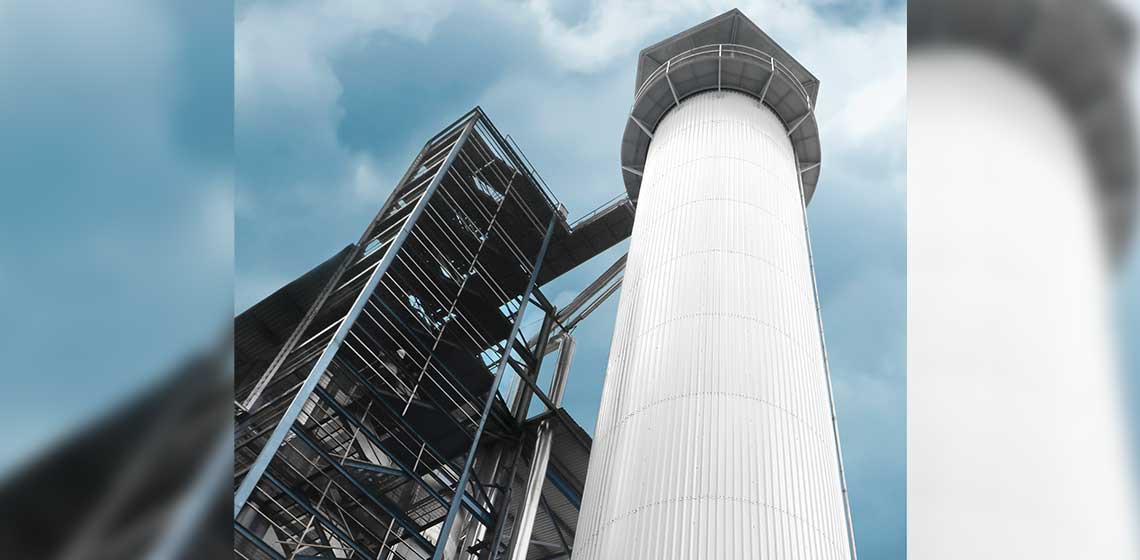BMA boosts efficiency of its OVC cooling crystalliser

01.07.2021
A facelift that is more than skin deep
How do you keep successful machinery and equipment attractive? The approach is well known from the automotive industry: minor changes are made to a car model over several development cycles, to ensure that the basic concept remains competitive and attractive to buyers for years or even decades. In a development context, this is known as a facelift.
The example from car manufacturing illustrates clearly how technology and social trends are reflected in a product: a better engine, updated design or more stringent safety standards resulting from new customer requirements or legal rules. The plant and mechanical engineering industry also responds to technology and social trends, but the relevant changes sometimes become evident only where the development history spans several decades and different stages can be compared.
The basic concept – effective and convincing
The cooling crystalliser principle for the crystallisation of C product was “invented” 40 years ago and registered as utility model DE8032737 (9 December 1980). In the cylindrical product chamber of a vertical unit, cooling coils are combined into cooling block elements. These oscillate up and down, driven by hydraulic cylinders. While the massecuite in a crystalliser runs from top to bottom, the coolant flows through the cooling pipes in a counterflow system, i.e. from bottom to top. A slowly rotating distributor distributes the massecuite uniformly across the entire crystalliser cross section as it enters the unit. The reason for developing such a cooling crystalliser was to achieve an “improved piston flow that would have a positive impact on retention time behaviour” (DE8032737). Today, this type of cooling crystalliser from BMA is known as an OVC (oscillating vertical crystalliser).
International triumph for the OVC from BMA
The OVC principle is successfully used around the globe. To date, BMA has sold more than 100 units for beet and cane sugar factories and refineries. The process engineering benefits of this system compared to cooling crystallisers using agitators or rotating cooling elements have been demonstrated during operation:
• Very good long-term heat transfer between the massecuite and the coolant
• Oscillating cooling surfaces for excellent self-cleaning effect
• Considerably reduced formation of fines
• High yields thanks to a low massecuite temperature
In continuous development, BMA never loses sight of these benefits, as they are crucial to the OVC’s success. Nevertheless, new wishes and useful suggestions that have emerged over the years are either implemented as one-off models in individual orders, or used in BMA’s continuous improvement process (CIP).
Advances in technology, manufacture and more
The continuous development of machinery and equipment may concern a number of aspects, such as technology concepts or the use of instrumentation and control engineering systems. In the production of machinery and equipment, we look at quotations prepared based on customer specifications, the manufacturing process, shipment and assembly. Plant operators are interested in improved operation and equipment maintenance. Continuous development also includes considerations regarding the disassembly of machinery and equipment at the end of their lifespan, and thus the entire product life cycle. Throughout, both the manufacturer’s and the customer’s interests and benefits are taken into account. You could say that a facelift has the same effect as an update. It comprises not only obvious improvements; some changes may be inconspicuous, concerning only minor details – but have a major impact.
After the facelift: OVC innovations that make a difference
Compact design: The cooling coils are mounted closer together, resulting in a larger cooling surface area for the crystalliser. This increases the space-time yield. With the new range of different sizes, higher throughputs can be achieved with the same volume. Thanks to the modular design, a suitable configuration for the relevant layout and installation can be quickly found already at the engineering stage, based on a customer’s specifications. The need for extensions or potential savings can be easily assessed. Manufacture can start as soon as the order is received, shortening delivery times. A closed-cycle cooling system has long been recommended to prevent corrosion in the cooling pipes. Experience has shown this to extend the cooling system’s lifespan. After its facelift, our OVC now comes with such a closed-cycle cooling system as standard. The hydraulic drive for moving the cooling coils is a preconfigured module, which is placed immediately next to the hydraulic cylinders on the platform at the top of the OVC. As this reduces the length of the high-pressure hydraulic pipes, considerably less hydraulic fluid is needed.
Automation: True to the slogan “simplicity is best”, the facelift has also involved an update of the control and automation system. Instead of a custom specification for implementing the OVC control system in a local DCS, BMA now delivers a turnkey automation solution. Customers can choose between different modules based on their requirements: “Essential” comprises the hydraulic drive and the integrated instrumentation, while the “Extended” module also provides the necessary process parameters for control of the cooling system. The “Advanced” module comprises additional equipment. What all modules share is a simple interface for controlling and safely operating the OVC – either from a local terminal or a control centre.
Top platform: For the most striking innovation, you need to look up: a platform at the top of the OVC now provides ample space for assembly and maintenance.
Improved efficiency for the OVC – now and in future
Each improvement is arguably a major development step that pays off for our customers. Customer benefits:
• Simple and economical operation
• Competitive and affordable pricing
• Efficient operation
• Shorter delivery times
• Low maintenance
The individual improvements, perfectly coordinated, together make up the facelift. This OVC with improved efficiency now forms the basis for all future installations.
